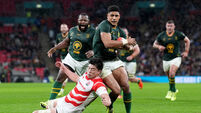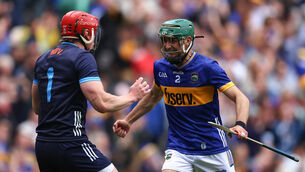Who is the next Purple Cow?
He argued that in a modern consumer market place, swamped by competitors with similar products, the key to success is to stand out from the crowd, be innovative, and don’t just follow the herd.
Over the past decade, the game of Gaelic Football has witnessed a series of significant and, maybe at times, unpalatable changes.
Driven by demand for success and return on investment, certain managers have delivered on the back of discovering their very own Purple Cows.
The Armagh team at the turn of the century brought forth a new level of Gaelic games conditioning, which saw them physically dominate opponents in a way never witnessed. Their success triggered a shift in the ways teams were prepared, and size definitely began to matter.
Hot on Armagh’s heels, Mickey Harte developed a brand of total football that whilst often imitated, has never been equalled.
Tyrone’s 2003 and 2005 successes were as much down to the quality of players on display, but for me, their 2008 victory can largely be put down to his revolutionary system of play.
On a sunny Saturday evening in 2006, the arrival of Kieran Donaghy to the edge of the square re-invigorated a Kerry outfit who had just been defeated by Cork and lost three of the last four All-Irelands to northern opposition. Spurring them on to win back-to-back All-Ireland titles, Donaghy’s emergence at 14 sparked a throw back to days of yore, with managers across the country scurrying to find their very own ‘Star’.
However, you can’t make a silk purse out of a pig’s ear, and we’ve witnessed many a pig’s ear floundering around the six yard box in the years since…
Stephen Cluxton’s contribution to Dublin’s victory last year should never be underestimated (he was my shout for Player of the Year); and he has developed his restart strategy to devastating effect. Short or strategic kick-outs have now made the traditional ‘Fear Laidir’ virtually extinct, with most teams trying to implement similar systems, but Cluxton continues to be the market leader.
And then there is Donegal with their entrepreneurial defensive approach. While not pretty on the eye, Jim McGuinness’ ‘Purple Cow’ won plenty of honours last year. But rivals would be foolish to think that his system is easily replicated. Yes, getting men behind the ball is relatively straightforward in principle. However, to ‘make it work’, you need a number characteristics to dovetail perfectly; selfless discipline, elite conditioning, excellent ball carriers and quality finishers. Simple? Crude? Hardly.
They say imitation is the greatest from of flattery, but it is also a sure sign of insecurity. Managers who are under pressure to get instant results are often coerced into emulating their rivals.
Alas it means they often ignore the strengths and weaknesses of the resources available to them. I believe systems of play should be aligned relative to the resources at your disposal, not the other way around. If you have natural scoring forwards, get them into scoring positions as much as possible.
If you have natural ball winners in the middle third, hit them directly and stop messing about with short kick-outs. If you have excellent man marking defenders, then let them at it and leave half forwards to do their primary job; attack.
The best teams and managers will do this along with introducing new innovations, but only if it suits them.
So what will be the next Purple Cow? Maybe some day soon a team will counteract the defensive/sweeper system by calling the bluff and playing with 8 or 9 forwards instead of having extra men marking space in defence. Now that would be interesting…











